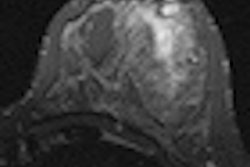
NEW YORK (Reuters Health) - Speckle-tracking echocardiography allows optimal left ventricular (LV) lead placement and improved outcome in cardiac resynchronization therapy, U.K. researchers say.
This was "the first randomized study to use speckle-tracking echocardiography to guide the implanter, and the results confirm the importance of such detailed individual assessment," senior investigator Dr. David P. Dutka of Addenbrooke's Hospital, Cambridge, the United Kingdom, told Reuters Health by email.
Several years ago, Dr. Céline Goffinet of the Brussels Heart Center and Dr. Jean-Louis Vanoverschelde of Université catholique de Louvain, both in Belgium, described how speckle-tracking echo works. "Because of scattering, reflection and interference of the ultrasound beam in myocardial tissue, speckles appear in grey scale two-dimensional echographic images," they wrote in a 2007 article in European Cardiology. "These speckles represent tissue markers that can be tracked from frame to frame throughout the cardiac cycle."
Neither of those two authors was involved in Dr. Dutka's study, in which 247 patients underwent baseline echocardiographic speckle-tracking 2-dimensional radial strain imaging before cardiac resynchronization.
After excluding 27 patients (11%) for poor image quality, the researchers randomly assigned the remaining 220 patients to two groups.
A control group had the resynchronization procedure without echocardiographic guidance. In the other patients, researchers used data from the speckle-tracking echo to position the LV lead at the latest site of peak contraction. The latest site of peak contraction with an amplitude of more than 10% was used to signify freedom from scar; segments with a radial strain amplitude of less than 10% at the LV pacing site were regarded as nonviable.
In a report online 7 March in the Journal of the American College of Cardiology, Dr. Dutka and colleagues observe that the best CRT response is achieved by placing the LV lead at the latest sites of contraction and away from the scar.
The primary end point -- a 15% or greater reduction in LV end-systolic volume at six months -- was achieved by 70% in the intervention group and 55% of controls.
In addition, 83% of the speckle-echo group improved by at least one New York Heart Association functional class, compared to 65% of controls. The intervention group also had a lower rate of all-cause mortality, plus a lower combined rate of all-cause mortality and heart failure-related hospitalization.
Given these findings, continued Dr. Dutka, "the study raises, for the first time, the issue that inappropriate placement of the LV lead without such guidance may confer harm and increase mortality. This question must now be addressed in a larger randomized study and there may potentially be a need for core laboratories to be established to analyze echocardiograms and enable (resynchronization therapy) to be delivered optimally."
Dr. Jalal K. Ghali, who wrote an editorial published with the paper, told Reuters Health by email, "The inability to predict individual responses has been the Achilles' heel of randomized controlled trials. This important trial was designed to integrate specific information collected from individual patients."
In his editorial, Dr. Ghali of Wayne State University, Detroit, points out "that the lack of response to (resynchronization) in a substantial portion of patients (one-third) has been a consistent finding."
"The findings of this trial," he concluded, "call into question the wisdom of not selecting the most likely responders when an invasive and costly procedure such as (cardiac resynchronization) is initiated."
The study had no commercial funding, and the authors declared no conflicts of interest.
By David Douglas
Source: http://bit.ly/ya6fN7
J Am Coll Cardiol 2012.
Last Updated: 2012-03-12 18:20:27 -0400 (Reuters Health)
Copyright © 2012 Reuters Limited. All rights reserved. Republication or redistribution of Reuters content, including by framing or similar means, is expressly prohibited without the prior written consent of Reuters. Reuters shall not be liable for any errors or delays in the content, or for any actions taken in reliance thereon. Reuters and the Reuters sphere logo are registered trademarks and trademarks of the Reuters group of companies around the world.


















